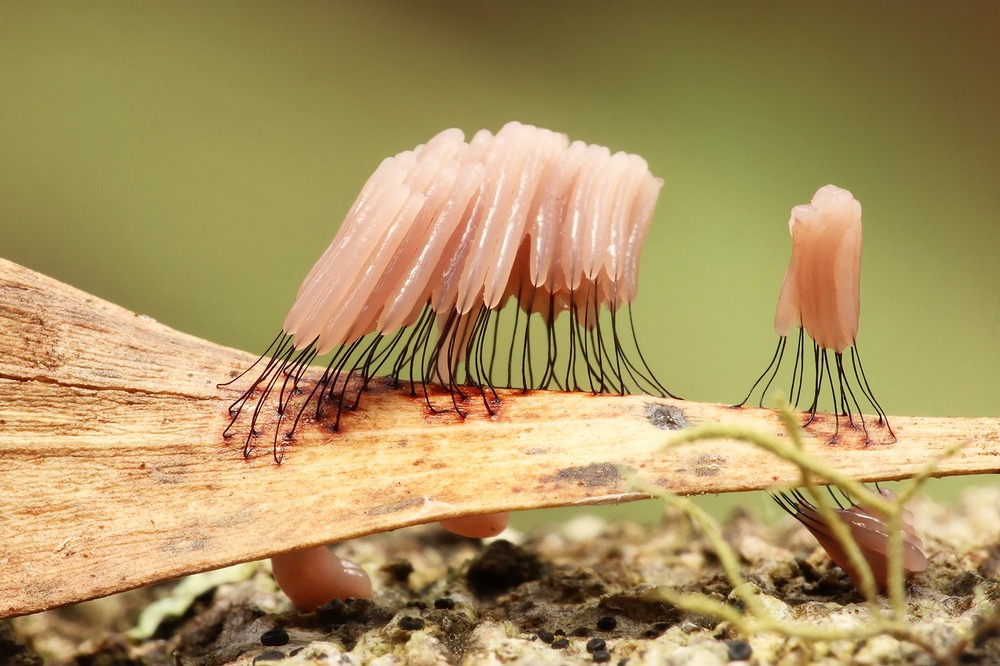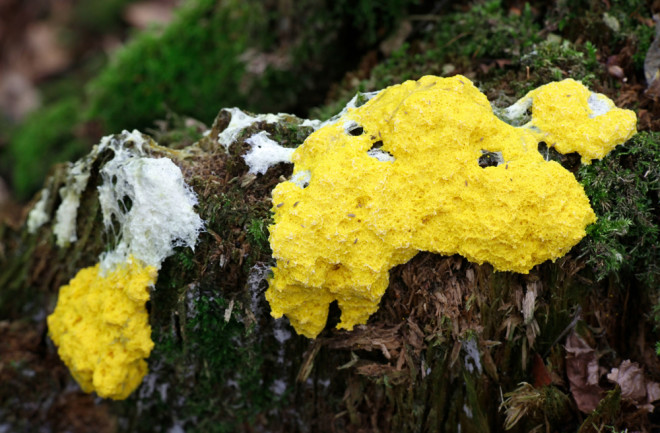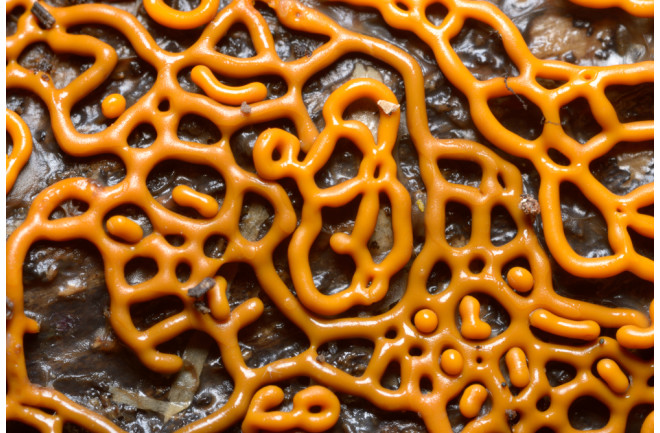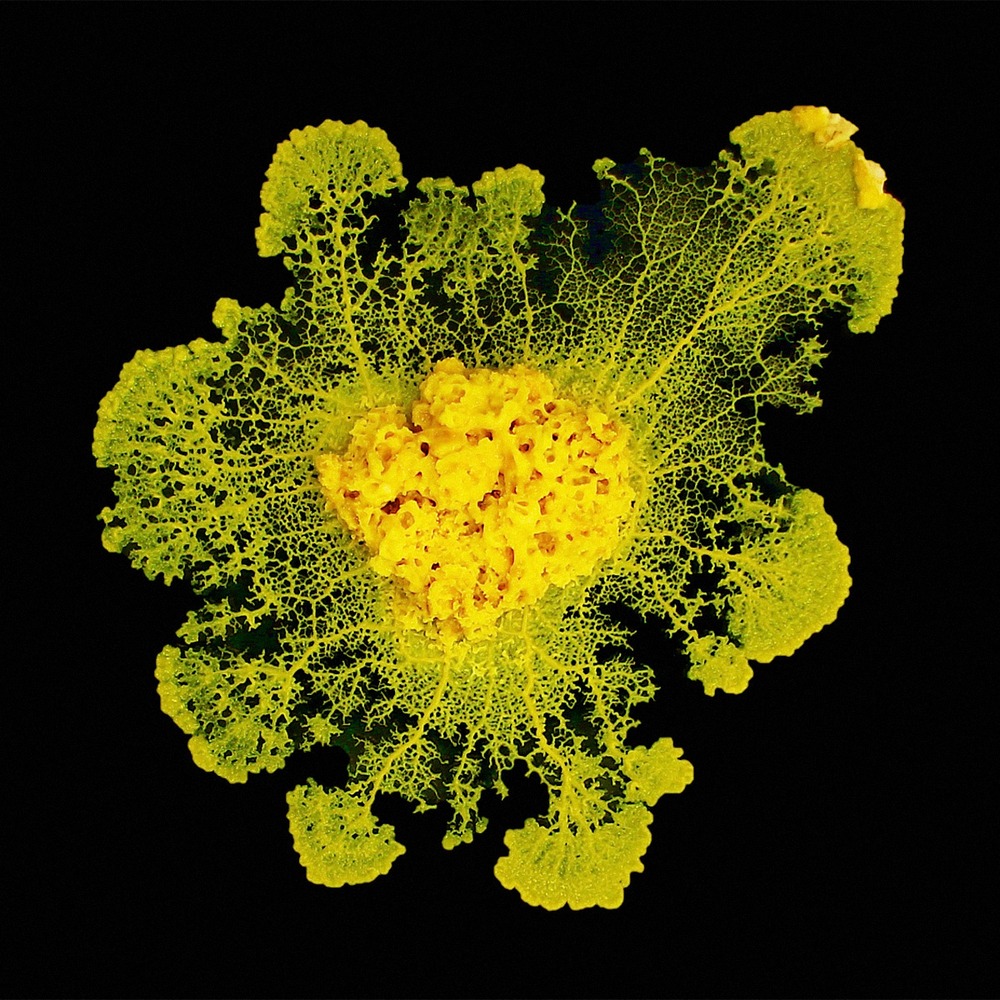
Slime mold or slime mould is an informal name given to a polyphyletic assemblage of unrelated eukaryotic organisms in the Stramenopiles, Rhizaria, Discoba, Amoebozoa and Holomycota. Most are microscopic; those in the Myxogastria form larger plasmodial slime molds visible to the naked eye. The slime mold life cycle includes a free-living single-celled stage and the formation of spores. Spores are often produced in macroscopic multicellular or multinucleate fruiting bodies that may be formed through aggregation or fusion; aggregation is driven by chemical signals called acrasins. Slime molds contribute to the decomposition of dead vegetation; some are parasitic.
Most slime molds are terrestrial and free-living, typically in damp shady habitats such as in or on the surface of rotting wood. Some myxogastrians and protostelians are aquatic or semi-aquatic. The phytomyxea are parasitic, living inside their plant hosts. Geographically, slime molds are cosmopolitan in distribution. A small number of species occur in regions as dry as the Atacama Desert and as cold as the Arctic; they are abundant in the tropics, especially in rainforests.
Slime molds have a variety of behaviors otherwise seen in animals with brains. Species such as Physarum polycephalum have been used to simulate traffic networks. Some species have traditionally been eaten in countries such as Ecuador.
Taxonomic history
Lycogala epidendrum was the first slime mold to be discussed scientifically, by Thomas Panckow in 1654.
The first account of slime molds was Thomas Panckow ‘s 1654 discussion of Lycogala epidendrum. He called it Fungus cito crescentes, “a fast-growing fungus”.
German mycologist Heinrich Anton de Bary, in 1860 and 1887, classified the Myxomycetes (plasmodial slime molds) and Acrasieae (cellular slime molds) as Mycetozoa, a new class. He also introduced a “Doubtful Mycetozoa” section for Plasmodiophora (now in Phytomyxea) and Labyrinthula, emphasizing their distinction from plants and fungi. In 1880, the French botanist Philippe van Tieghem analyzed the two groups further. In 1868, the German biologist Ernst Haeckel placed the Mycetozoa in a kingdom he named Protista. In 1885, the British zoologist Ray Lankester grouped the Mycetozoa alongside the Proteomyxa as part of the Gymnomyxa in the phylum Protozoa. Arthur and Gulielma Lister published monographs of the group in 1894, 1911, and 1925.
In 1932 and 1960, the American mycologist George Willard Martin argued that the slime molds evolved from fungi. In 1956, the American biologist Herbert Copeland placed the Mycetozoa (the myxomycetes and plasmodiophorids) and the Sarkodina (the labyrinthulids and the cellular slime molds) in a phylum called Protoplasta, which he placed alongside the fungi and the algae in a new kingdom, Protoctista.
In 1969, the taxonomist R. H. Whittaker observed that slime molds were highly conspicuous and distinct within the Fungi, the group to which they were then classified. He concurred with Lindsay S. Olive’s proposal to reclassify the Gymnomycota, which includes slime molds, as part of the Protista. Whittaker placed three phyla, namely the Myxomycota, Acrasiomycota, and Labyrinthulomycota in a subkingdom Gymnomycota within the Fungi. The same year, Martin and Alexopoulos published their influential textbook The Myxomycetes.
In 1975, Olive distinguished the dictyostelids and the acrasids as separate groups. In 1992, David J. Patterson and M. L. Sogin proposed that the dictyostelids diverged before plants, animals, and fungi.
Phylogeny
Slime molds have little or no fossil history, as might be expected given that they are small and soft-bodied. The grouping is polyphyletic, consisting of multiple clades (emphasised in the phylogenetic tree) widely scattered across the Eukaryote…


